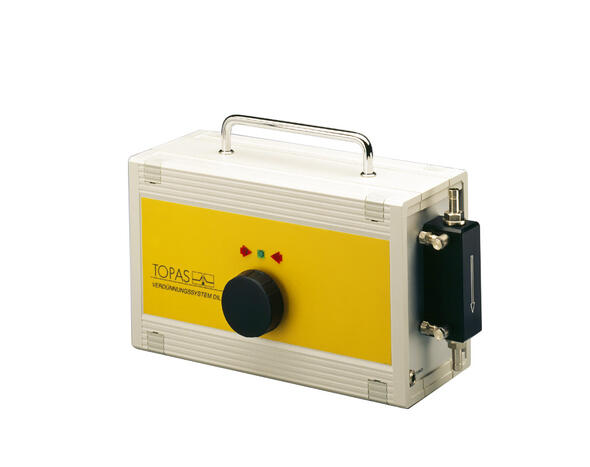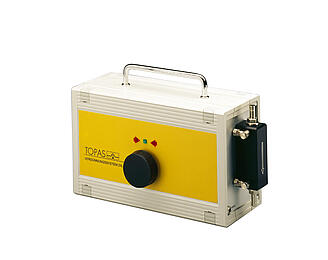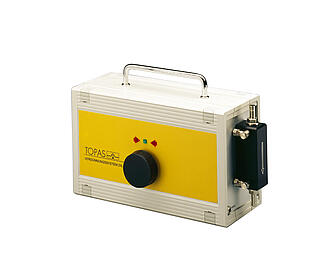DIL 550 Dilution System
Dilution System DIL 550 for static dilution (1:100) of aerosols at static air flow rate (28,3 L/min)
The DIL 550 Dilution System serves for the defined and reproducible reduction of particle concentrations in aerosols.
The main application of the DIL 550 dilution system is the verification of test aerosols for testing clean rooms. DIN EN ISO 14644-3 defines the necessity of appropriate dilution systems when using test aerosols for verification. In the applied principle that corresponds to the standard VDI 3491-15, particles are removed from the sample aerosol according to the specified dilution ratio. The particle size distribution remains unchanged.
Standards
VDI 3491-15
VDI 3491-6
VDI 2083
ISO 14644-3
download
product sheet DIL 500 seriesBenefits
- constant and reproducible aerosol dilution even under changing operation conditions
- internal monitoring of the dilution ratio and visualisation
- suitable for mobile operation (compressed air supply is not required)
- long-term lifetime, minimum maintainance required
- precice operation for both overpressure and underpressure
- flow rate and dilution factor adjustable for customer requirements
Applications
- validation of laminar air flow boxes/benches and clean room/environments
- evaluation of filtration separation efficiency
- analysis of highly concentrated aerosols
- aerosol research
From the aerosol flow to be diluted, a sample is passed through a thin capillary. The particle concentration of the capillary flow rate remains unchanged, whereas a HEPA filter removes nearly all particles from the bypassing flow rate. After the capillary and filter both flows are remixed. The dilution ratio results from the ratio between the two single flow rates.
| Parameter title | Unit | Value |
|---|---|---|
| purpose of conditioning | - | dilution of aerosols |
| sample condition, outlet | - | diluted aerosol |
| dilution factor | - | 100 |
| aerosol, volumetric flow rate | L/min | 28,3 |
| setting method | - | manual |
| sample condition, inlet | - | non-diluted aerosol |
| power supply | - | 12 V DC, 30 mA |
| hose connector | mm | Ø 8 (optional Ø 10) |
| pressure drop | kPa | 0,8 ... 1,3 |
| environmental condition, temperature | °C | 10 ... 50 |
| environmental condition, max. counterpressure | kPa | ± 35 |
| dimensions (w × h × d) | mm | 300 × 160 × 110 |
| weight | kg | 1,5 |
- Jørgensen R. B. Comparison of four nanoparticle monitoring instruments relevant for occupational hygiene applications J. Occup. Med. Toxicol. 14 (2019) 28,
dx.doi.org/10.1186/s12995-019-0247-8 - Jørgensen R. B. and Kero I. T. Real-time measurements and characterization of airborne particulate matter from a primary silicon carbide production plant Int. J. Environ. Res. Public Health 14 (2017) 12, 1611
dx.doi.org/10.3390/ijerph14121611 - Kero I. T. and Jørgensen R. B. Comparison of three real-time measurement methods for airborne ultrafine particles in the silicon alloy industry Int. J. Environ. Res. Public Health 13 (2016) 9, 871
dx.doi.org/10.3390/ijerph13090871 - Romano F., Marocco L., Gustén J. and Joppolo C. M. Numerical and experimental analysis of airborne particles control in an operating theater. Build. Environ. 89 (2015) 0, 369 - 379
dx.doi.org/10.1016/j.buildenv.2015.03.003


